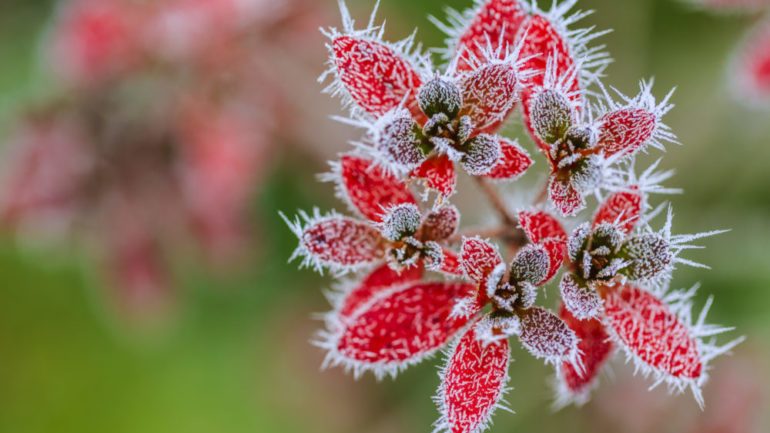In most climates, after fall’s riotous hues fade, landscapes become dreary and devoid of color. Whether you live in a snowy or moderate climate, here are some tips for transforming your barren yard with winter plants.
Problems winter plants can solve for you
Problem: Your grass is hibernating, and your yard looks brown and drab.
Solution: You can’t do much for dormant grass. However, placing winter plants in containers around the yard will draw the eye to something else. Use around the base of trees, in gardens, next to walkways, and on patios or porches.
Problem: Overwintered spring and summer plants make your garden look bleak and lifeless.
Solution: Using winter plants that have blooms or colored foliage will give your landscaping variety. Evergreens, conifers, and even berry bushes add color to your garden during colder months. Bonus: Berry-producing bushes typically attract birds.
Problem: Outdoor seating areas look drab and lonely during the winter months.
Solution: Add a fire pit, then place planters next to the seating area. Use some of the trees and flowers described below in brightly colored pots.
Winter plants worthy of consideration
In contemplating which winter plants to purchase, look for colorful or textured bark, interesting branch patterns, or evergreen foliage. Here are some suggestions.
- The bark of the red osier dogwood varies in shades from red to burgundy. It also produces white blooms and fruit in springtime. Extremely resilient, it can grow to a height of six feet to 10 feet. In a large container, surround the base of this tree with potted winter flowers. Or plant it in the ground.
- The compact American cranberry bush viburnum grows red berries that birds love. In the spring, you’ll see its white flowers first and then red fruit. During the fall, the leaves turn from red to purple, making this a plant that gives all year. It can reach heights of four or five feet with a width of three to four feet.
- Spring or winter heath Scotch yields flowers in white, pink, red, or lavender. This carpet of evergreen leaves works amazingly as ground cover during cold months, especially on sloped landscapes.
- Flowers that bloom in winter include hellebore, phlox, winter jasmine, snowdrops, and Algerian iris. Most of these flower through the fall and winter, then hibernate during spring and summer.
Keep them pruned and looking tidy, but most require little to no maintenance. Planting a few varieties of these will keep your landscape looking bright, colorful, and alive even during the coldest seasons.
Related – Festive Outdoor Decor Enhances Winter Sales


